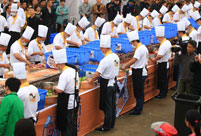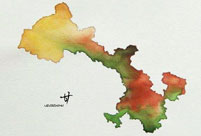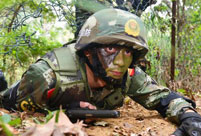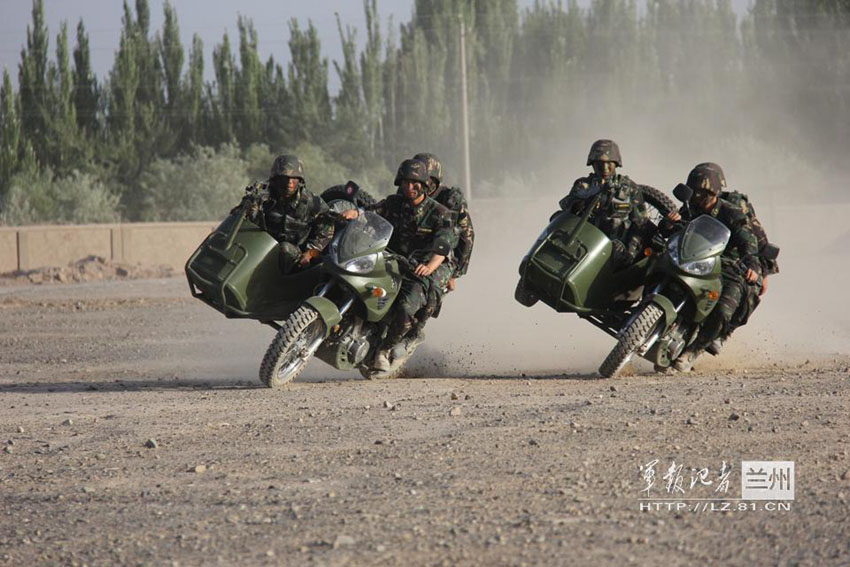 First Russian Street in Tianjin open to public
First Russian Street in Tianjin open to public
 Motorcycle stunt on the Bund
Motorcycle stunt on the Bund
 French Spiderman Alain Robert climbs up Galaxy Hotel in Macao
French Spiderman Alain Robert climbs up Galaxy Hotel in Macao
 Africans in Guangzhou
Africans in Guangzhou
 Pole dancer shows strength and beauty up in the air
Pole dancer shows strength and beauty up in the air
 College girls call for protection of ecological space on earth
College girls call for protection of ecological space on earth
 Top 10 celebrities driving auto brands
Top 10 celebrities driving auto brands
 10 low-carbon tips to save money
10 low-carbon tips to save money
 Luxury cars make Asia premiere at Auto China
Luxury cars make Asia premiere at Auto China
 Versatile dog
Versatile dog
SEOUL, April 29 -- The Democratic People's Republic of Korea halted its live-fire drill just 10 minutes after starting it Tuesday afternoon, in what appeared not to provoke the grief- stricken South Korea over a ferry sinking disaster.
A South Korean Defense Ministry official earlier told Xinhua on condition of anonymity that the DPRK set off its live-fire drill at 2 p.m. local time near the disputed inter-Korean border islands.
South Korean Defense Ministry spokesman Kim Min-seok told a routine press briefing earlier in the day that the Southwestern Command of the Korean People's Army sent a fax to the South Korean Navy's Second Fleet at 8:52 a.m., which notified the live-fire drill near the Northern Limit Line (NLL).
Kim said the military will fire in response its artillery shells toward waters north of the sea border if DPRK's shells fall on its territorial waters, calling the live-fire drill as provocative.
The DPRK, however, suspended the fire exercises just 10 minutes later, with about 50 rounds of shells fired from coastal battery positions near the NLL. No shell has landed in South Korean territorial waters, the defense ministry official said over phone.
People on the border islands have been evacuated, but the evacuation order was lifted at 3:30 p.m..
The official said the Tuesday drill seemed to have ended, but he said the military will maintain full preparedness for possible provocations or firing exercises at night.
It was the second time in a month that the DPRK conducted such exercises, but Tuesday's drill was less provocative than the exercise staged at the end of March.
On March 31, the DPRK shot some 500 hundred rounds of shells with its artillery guns just north of the NLL, and some 100 of them reportedly fell in South Korean territorial waters. The South Korean military fired back about 300 rounds with its K-9 self- propelled howitzers.
The less provocative drill was attributable to the South Korean ferry sinking disaster, where more than 300 people have been missing or dead. The ferry Sewol capsized and sank off South Korea 's southwestern region.
The DPRK's fire drill came amid rising tensions on the Korean Peninsula. Pyongyang threatened to conduct a "new form of nuclear test" last month, after firing around 90 short-range missiles in late February and March.
The South Korean Defense Ministry said lots of activity has been detected at the DPRK's Punggye-ri nuclear test site ahead of U.S. President Barack Obama's visit to Seoul last week.
Obama and his South Korean counterpart Park Geun-hye held a summit, agreeing to maintain close cooperation to achieve a goal of complete, verifiable and irreversible denuclearization of the DPRK in a peaceful manner. The two presidents urged Pyongyang to stop "doing further threatening actions."
Yeonpyeong and Baengnyeong islands, near which the DPRK carried out its live-fire drill, have been a hotspot on the Korean Peninsula.
The DPRK fired shells at Yeonpyeong in November 2010, killing four people. In March 2010, a South Korean navy corvette Cheonan sank in waters near the Baengnyeong Island, killing 46 soldiers. Seoul said the warship sank by Pyongyang's torpedo attack, but the DPRK has repeatedly denied its involvement in it.
 Overseas returnees strive for dreams in Beijing
Overseas returnees strive for dreams in Beijing Fried up: Chili pork bonanza in Central China
Fried up: Chili pork bonanza in Central China Hand-painted maps go viral online
Hand-painted maps go viral online 4th Beijing Int'l Film Festival ends
4th Beijing Int'l Film Festival ends Commando elite specializes in sign language
Commando elite specializes in sign language Man photoshops himself into girlfriend's childhood photos
Man photoshops himself into girlfriend's childhood photos Photo story: Stallholders at Beijing Zoo Wholesale Market
Photo story: Stallholders at Beijing Zoo Wholesale Market Artists on backstage
Artists on backstage Beckham launches fund to support youth soccer in China
Beckham launches fund to support youth soccer in China 'African Street' in Guangzhou
'African Street' in Guangzhou Special operation members in comprehensive training
Special operation members in comprehensive training Cute Shaolin boy melts the hearts of millions
Cute Shaolin boy melts the hearts of millions Giant panda Sijia is back to happy life
Giant panda Sijia is back to happy life Richest Chinese of 2014: half from the mainland
Richest Chinese of 2014: half from the mainland Chengdu - laid-back lifestyle makes happiest city
Chengdu - laid-back lifestyle makes happiest cityDay|Week|Month